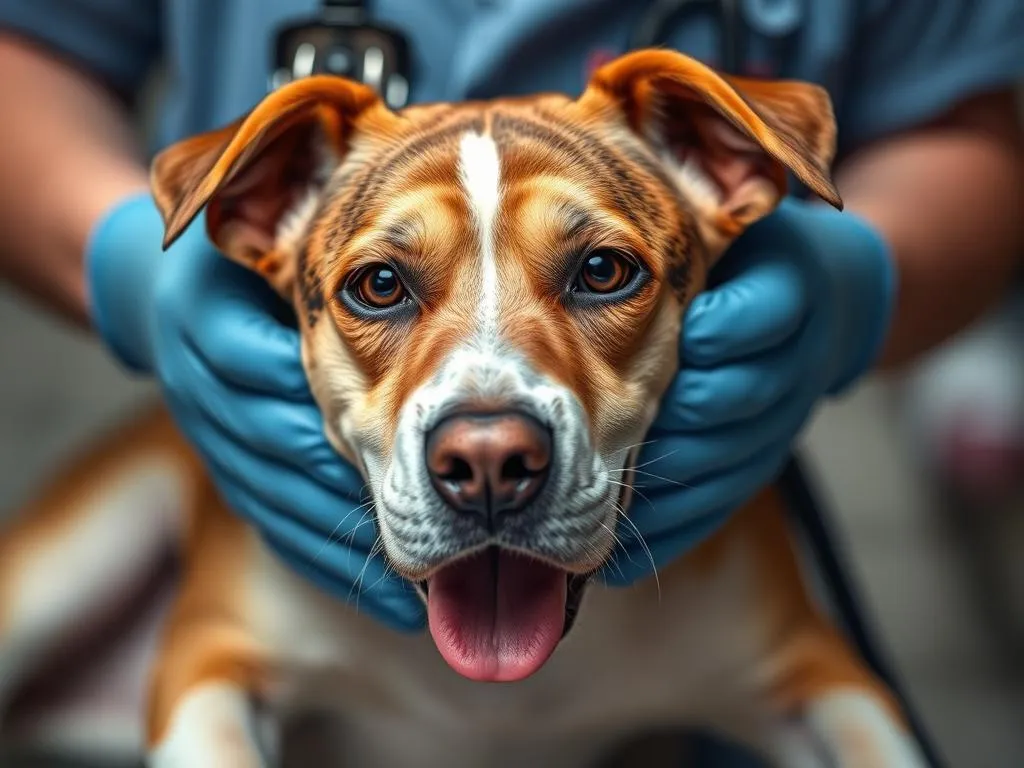
Maintaining a healthy weight for dogs is crucial for their overall well-being. Just like in humans, being underweight can lead to a host of health problems in dogs. If you’re concerned about your pet’s weight and wondering how to fatten up a dog, you’re not alone. Many dog owners face this challenge, and understanding how to approach it can make a significant difference. In this article, we will delve into vet-approved answers and methods for safely fattening up a dog.
Understanding Canine Weight Issues
Importance of Healthy Weight
A healthy weight is vital for a dog’s quality of life. Underweight dogs may experience a variety of health issues, including weakened immune systems, low energy levels, and decreased ability to recover from illnesses or injuries. Maintaining a proper weight ensures that dogs can thrive, engage in playful activities, and enjoy their daily lives.
When a dog is underweight, it can lead to serious complications such as muscle loss, organ dysfunction, and increased susceptibility to infections. Therefore, ensuring your dog is at a healthy weight should be a priority for every pet owner.
Identifying Underweight Dogs
Recognizing the signs of an underweight dog is the first step toward ensuring its health. Common indicators include:
- Visible ribs: If you can easily see your dog’s ribs, it may be underweight.
- Loss of muscle mass: A lack of muscle definition, particularly around the shoulders and hips, is concerning.
- Fatigue: An underweight dog may tire easily and show reluctance to engage in play.
The Body Condition Score (BCS) system is a helpful tool for assessing a dog’s weight. This system ranges from 1 to 9, with 1 being severely underweight and 9 being obese. A score of 4-5 is typically considered ideal. By evaluating your dog’s BCS, you can determine whether it’s time to take action.
Causes of Underweight in Dogs
Several factors can contribute to a dog being underweight. Understanding these can help in addressing the issue effectively:
-
Medical Conditions: Health problems such as parasites, dental issues, or chronic diseases can prevent dogs from gaining weight. Regular vet check-ups are crucial to rule out these concerns.
-
Behavioral Issues: Some dogs may be picky eaters or may experience stress that affects their appetite. Identifying and addressing these behaviors can be essential for weight gain.
-
Environmental Factors: Living conditions, age, and lifestyle choices play significant roles in a dog’s weight. Older dogs may have different nutritional needs and require tailored diets.
Consulting a Veterinarian
Importance of Professional Advice
Before making any changes to your dog’s diet, consulting a veterinarian is essential. A vet can provide insights into the specific needs of your dog based on its age, breed, and health status. They can also help you understand how to fatten up a dog safely.
During a vet consultation, you can expect a thorough examination of your dog, including a review of its medical history and weight trends. Your vet may also ask about your dog’s eating habits, activity levels, and any noticeable changes in behavior.
Diagnostic Procedures
If your vet suspects an underlying health problem, they may recommend diagnostic tests. Common tests include:
- Blood tests: These can help identify metabolic or organ issues.
- Fecal exams: Used to check for intestinal parasites, which can contribute to weight loss.
Understanding the vet’s recommendations based on specific diagnoses is crucial. They may suggest dietary changes, supplements, or medications to help your dog gain weight.
Nutritional Strategies for Weight Gain
Choosing the Right Dog Food
One of the most effective ways to help your dog gain weight is by choosing high-calorie dog foods. Look for options that list quality proteins at the top of the ingredient list, as these provide essential nutrients for weight gain. Avoid foods with excessive fillers, as they offer little nutritional value.
High-calorie dog foods often contain added fats and proteins designed to support weight gain. Always consult your vet for recommendations on suitable brands and formulas based on your dog’s specific needs.
Feeding Frequency and Portion Control
Adjusting your dog’s feeding schedule can significantly impact its weight. Consider implementing multiple small meals throughout the day instead of one or two large ones. This method can help increase caloric intake without overwhelming your dog’s digestive system.
Gradually increase portion sizes to avoid upsetting your dog’s stomach. A sudden change in diet can lead to digestive issues. Monitoring your dog’s response to these changes is essential.
Supplementing Diet
Nutritional supplements can be beneficial in helping your dog gain weight. High-calorie pastes, protein powders, and other supplements can be incorporated into your dog’s diet. It’s important to use these products under the guidance of your veterinarian to ensure safety and effectiveness.
When considering supplements, look for products specifically formulated for dogs. These often contain essential vitamins and minerals that support overall health while promoting weight gain.
Homemade Diet Options
For those interested in homemade meals, there are several safe recipes to help increase caloric intake. Here are some ingredients to consider including:
- Lean meats: Chicken, turkey, and beef can provide high-quality protein.
- Healthy fats: Adding fish oil or flaxseed oil can boost caloric content.
- Carbohydrates: Brown rice or sweet potatoes offer additional energy.
However, it’s crucial to avoid certain ingredients, such as onions, garlic, chocolate, and any foods that are toxic to dogs. Always consult your vet before starting a homemade diet to ensure it meets your dog’s nutritional needs.
Behavioral and Lifestyle Adjustments
Encouraging Healthy Eating Habits
Making meals more appealing can encourage your dog to eat more. Consider adding low-sodium broth to dry food or warming meals slightly to enhance their aroma. Reducing distractions during feeding time can also help your dog focus on eating.
Establishing a consistent feeding routine can create a sense of security and predictability, which may improve your dog’s appetite.
Incorporating Exercise
While exercise might seem counterintuitive in the context of weight gain, it plays a crucial role in maintaining a healthy appetite. Engaging your dog in light exercise can stimulate its appetite and promote muscle development.
Recommended activities include short walks, gentle play sessions, or swimming. Always monitor your dog’s energy levels and avoid excessive strain, especially if it is significantly underweight.
Monitoring Progress
Tracking your dog’s weight gain is essential for ensuring that the strategies you implement are effective. Weigh your dog regularly and document any changes. Look for signs of progress, such as increased energy levels and improved body condition.
If your dog is not gaining weight or if you notice any other concerning symptoms, consult your veterinarian for further evaluation and adjustments to the plan.
Common Myths About Fattening Up Dogs
Misconceptions About Weight Gain
There are many misconceptions surrounding the topic of fattening up dogs. One common myth is that all dogs can eat anything without consequences. In reality, dogs have specific dietary needs, and inappropriate foods can lead to serious health issues.
Another misconception is that fat is good for all dogs. While healthy fats are necessary for energy, excessive fat can lead to obesity, which comes with its own set of health risks.
When to Be Concerned
There are red flags that require immediate attention from a vet. Sudden weight loss, lethargy, vomiting, or diarrhea are signs that something may be seriously wrong. It’s essential to address these symptoms promptly to avoid further health complications.
Understanding the balance between healthy weight gain and overall health is crucial. Always prioritize your dog’s well-being over appearance.
Conclusion
Fattening up a dog requires a thoughtful, vet-approved approach to ensure that it is done safely and effectively. By understanding the importance of a healthy weight, recognizing the signs of an underweight dog, and implementing nutritional strategies, you can help your furry friend thrive.
Consulting with a veterinarian is essential for personalized advice tailored to your dog’s specific needs. Remember that the goal is not just to add weight but to promote overall health and well-being. Prioritize your dog’s health, and with the right methods, you’ll see positive changes in no time.









